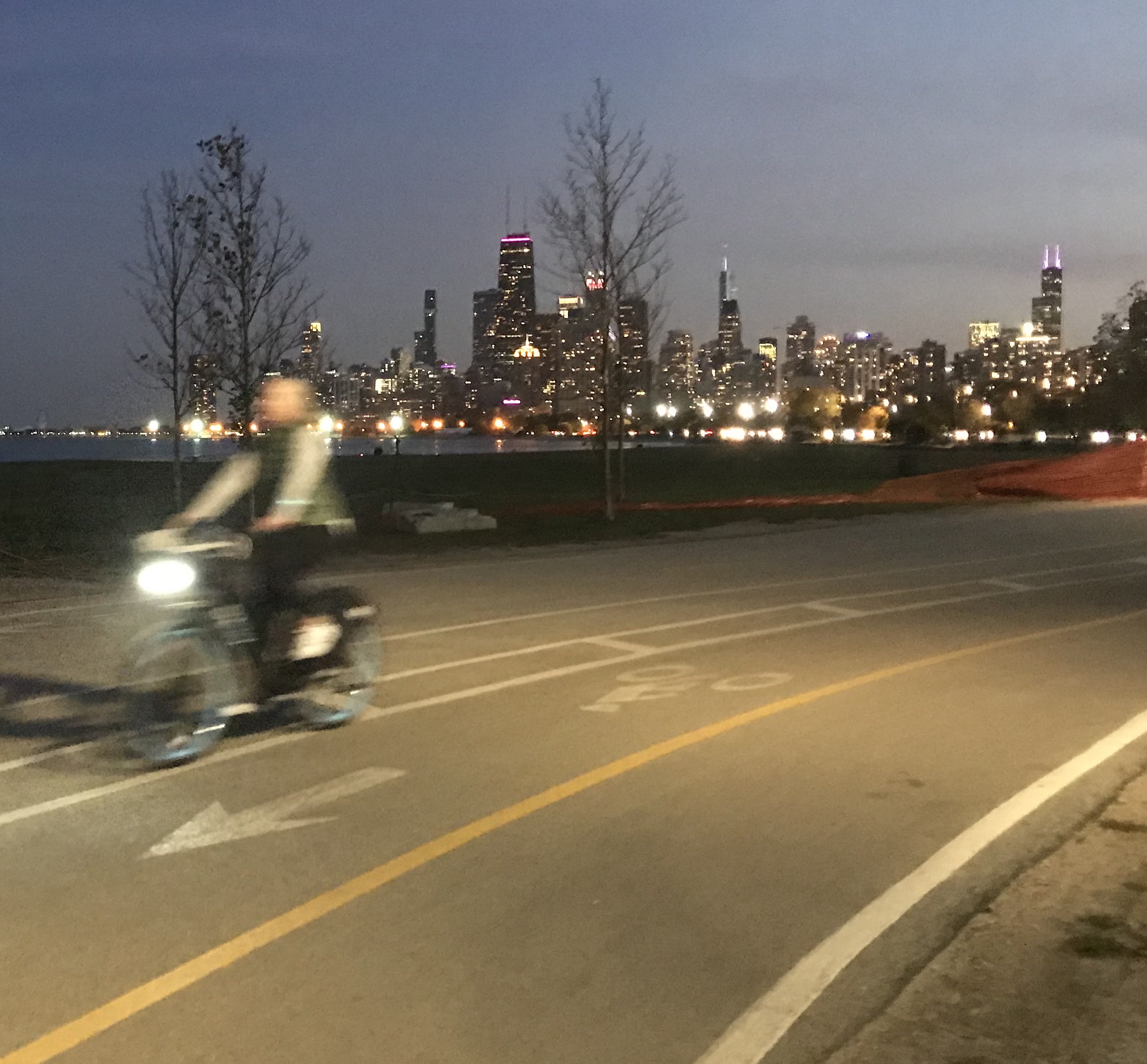Divvy's electric bikes debuted in late July, and after trying them out, I was blown away by how fast they felt. In fact, I was inspired to write up some etiquette suggestions, advising e-Divvy riders to be careful to avoid buzzing (passing too close at high speed) non-electric bike riders in bike lanes.
Now, I knew that the electrical assist was supposed to be capped at 15 mph, that is, when you hit that speed you stop getting an e-boost. And it definitely felt like I was going faster than 15. But I guess I didn't think too hard about it at the time, or else assumed I just wasn't that good at estimating bike speeds.
But on November 14 transportation advocate Steven Quispe noted on Twitter that the e-bikes seemed more sluggish than usual.
Has anyone else noticed that the @DivvyBikes ebikes recently seen to have had their motor assist nerfed to their advertised speed of 15mph?
— Steven Quispe (@Hello_Gello) November 14, 2020
While my ebike is being repaired, I’ve been riding them nearly everyday for a month, but they seem much slower as of today 😞
The person running the Divvy account responded, but didn't offer an explanation. Rather, they made it sound like Steven's recent, relatively molasses-like trips were outliers.
Hey, Steven! We are sorry to hear that speed affected some of your rides. DM us your account info if there is a ride you'd like us to take a look at!
— Divvy (@DivvyBikes) November 14, 2020
I contacted spokespeople for Divvy and the Chicago Department of Transportation, which oversees the publicly-owned, privately managed system, at the time, asking for info. But all I got was crickets.
The mystery was solved on Friday when Twitter user David Neary complained to Divvy about the lethargic-feeling cycles. Initially the person running the Divvy account once again acted as if nothing unusual had happened.
Hey David, thanks for reaching out! There is a 15 mph cap for pedal-assist bikes, for safety reasons. The bike can go faster but the bike will shut off pedal-assist once 15 mph is reached. This is why you may be feeling a slight difference in speed as you're riding!
— Divvy (@DivvyBikes) November 20, 2020
But when Neary pressed the issue, the Divvy rep admitted that, while the speed cap feature was already an option when the e-bikes launched in July, the cap wasn't actually turned on until roughly November 14, when Steven Quispe first tweeted about the issue, three-and-a-half months after the fact.
This speed cap was implemented at launch but was not actively turned on for riders. This has since been fixed and has been back on as of about 6 days ago! We're sorry for the inconvenience and we'll pass this feedback about the "brake feel" when riding.
— Divvy (@DivvyBikes) November 20, 2020
When I followed up with CDOT and Divvy on the subject today, sharing the above Divvy tweet, a transportation department spokesperson simply replied, "I don’t think there’s anything to add."
Needless to say, multiple Divvy users on Twitter were nonplussed, arguing that the new slower speed would make them think twice about using the e-bikes in the future. The black cycles carry a surcharge for trips north of Pershing Road and east of Western Avenue, where there's a relatively high density of stations, and thus it's pretty easy to find the non-electric blue bikes. That additional fee is $0.o5 a minute for holders of the discounted $5 Divvy for Everyone annual memberships, $0.15 for regular members, and $0.20 for single-ride and day pass users.
It's going to affect it big time. Few will pay 15 cents/min. for a negative experience. And tourists are in short supply - IF 'ya know what I mean.
— Lance Sanders (@Lancebowski) November 22, 2020
To take a glass-half-full view of the issue, 15 mph is still pretty fast. That's 50 percent faster than my typical 10 mph cruising speed, and I'd guess it's significantly faster than the average urban cyclist rides. So I'd still consider grabbing one of the e-bikes the next time I'm late for a downtown appointment, despite the surcharge.
But, yeah, it's not a great marketing strategy to charge a premium to use a service, get people used to using that service at level X, and then quietly lower the service quality to level Z. You're almost certain to lose some customers.





